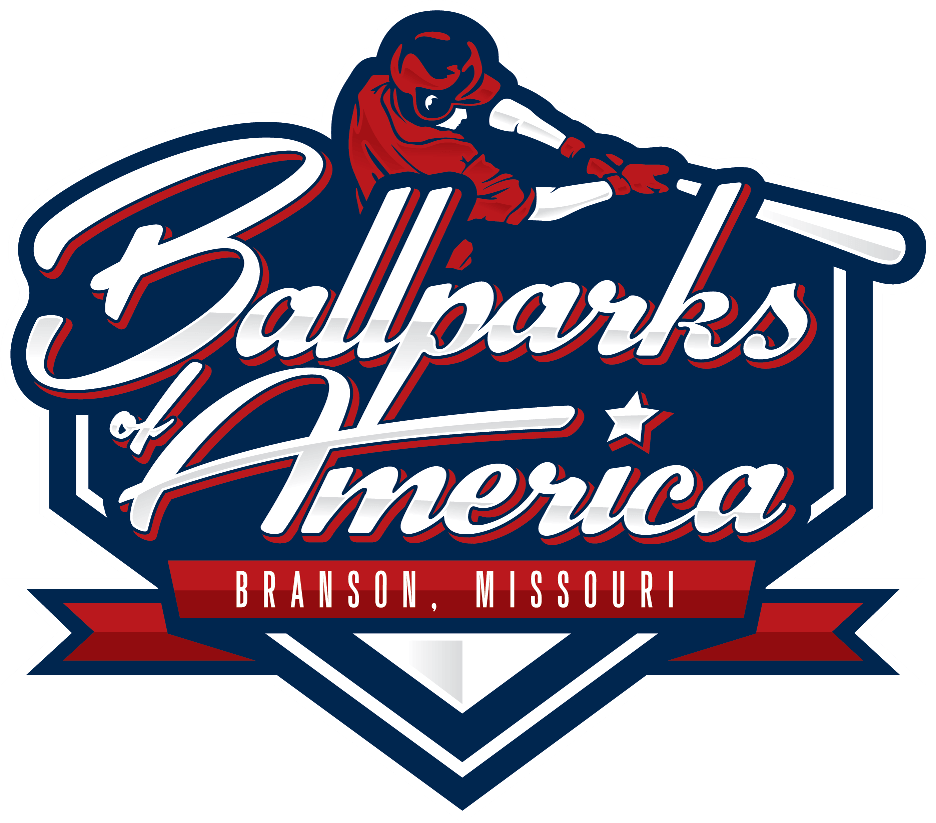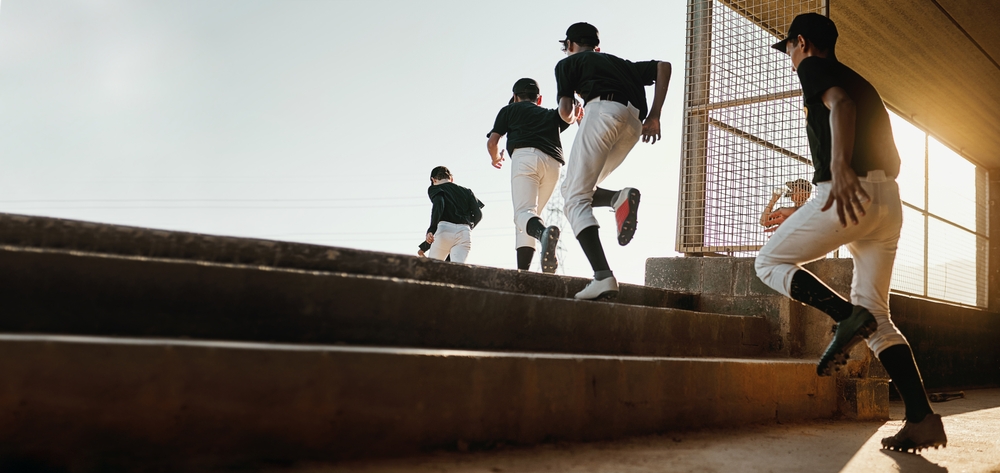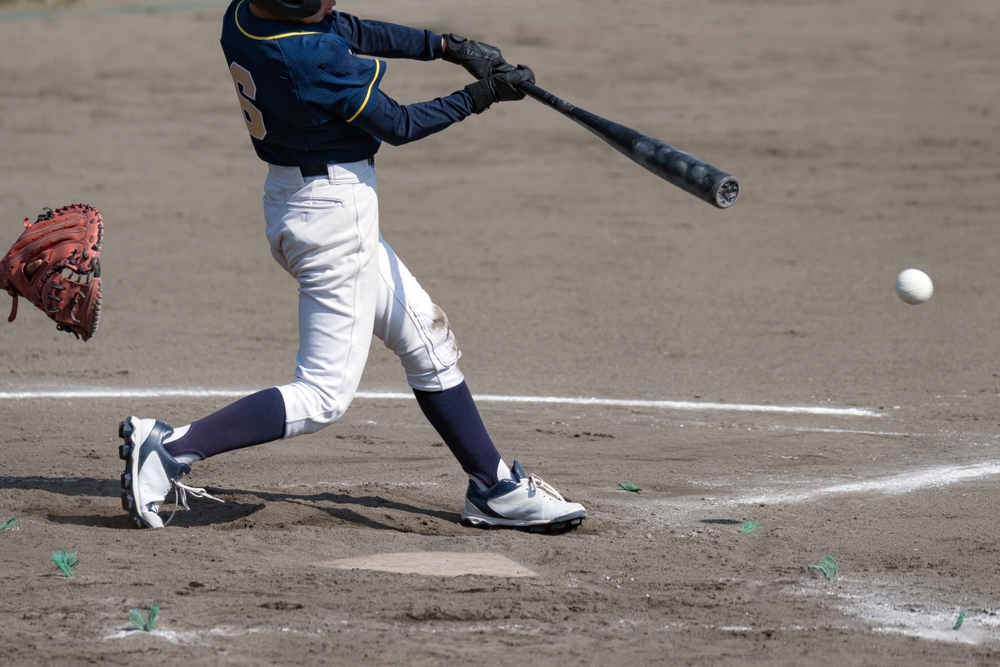Welcome to the home run haven, the grand slam grounds, and the ultimate destination for every youth baseball enthusiast – Ballparks of America. Our complex is a baseball lover’s dream come true in the heart of the United States, nestled in the heart of Branson, Missouri.
Related Post: 10 Things To Do in Branson During a Youth Travel Baseball Tournament
The fields at Ballparks of America are extraordinary. We’ve recreated baseball history by bringing two-thirds scale replicas of renowned major league ballparks to life, from the unmistakable Green Monster of Fenway Park to the classic ivy-covered walls of Wrigley Field.
We’ve shared a guide to the history of each MLB field we’ve replicated at Ballparks of America.
Fenway Park in Boston
Fenway Park in Boston, home of the Red Sox, is one of the most iconic and historic ballparks in the United States. Opening its gates on April 20, 1912, Fenway has witnessed over a century of baseball history as the Major’s oldest ballpark still in use.
Fenway Park has been the proud home of the Boston Red Sox since its opening. As one of the MLB’s oldest franchises, the Red Sox have a rich legacy at Fenway. The park is renowned for its unique features, notably the “Green Monster,” a towering left-field wall and a challenging obstacle for hitters.
Milestones at Fenway
Throughout its history, Fenway Park has hosted significant games and events.
One of the first great moments was 1912 when the Red Sox clinched their second World Series title by defeating the New York Giants in a dramatic Game 8.
The 1975 World Series featured Fenway prominently. Carlton Fisk’s dramatic, game-winning home run in Game 6, famously waving the ball fair, is etched into baseball lore.
Player Achievements at Fenway
The park has also been a witness to remarkable individual achievements. On September 28, 1919, Babe Ruth hit his record-setting 29th home run of the season at Fenway, solidifying his place in history as baseball’s first 30-home run hitter.
The great Ted Williams, one of the greatest hitters of all time, electrified Fenway with his legendary performances, including his final at-bat in 1960 when he hit a home run.
Events at Fenway
In addition to the Red Sox, Fenway Park has hosted other baseball events and teams. The Boston Braves (now the Atlanta Braves) played at Fenway in 1914 and 1915 before moving to their own stadium. Out of the eleven World Series Games played at Fenway, the Red Sox have won six and the Boston Braves one.
The park also hosted the 1946 and 1961 MLB All-Star Games. Fenway’s historical significance extends beyond baseball, as it has been a venue for football, hockey, and concerts.
The enduring charm of Fenway Park lies not only in its architectural quirks but also in the deep connection it fosters between the team and its passionate fan base. The park’s intimate setting, with its proximity between the players and fans, creates an atmosphere unlike any other in baseball.
Ebbets Field in Brooklyn
Ebbets Field was a mainstay of baseball in Brooklyn, New York, and it holds a cherished place in baseball history. Opening its gates on April 9, 1913, this iconic stadium became the home of the Brooklyn Dodgers and some of the most memorable moments in the sport.
Legendary Players at Ebbets Field
The Dodgers, led by legendary figures like Jackie Robinson and Pee Wee Reese, symbolized integration and resilience during a tumultuous era in American history.
Ebbets Field was also the stage for several milestones in baseball history. Jackie Robinson, the first Black MLB player in 1947, played his home games at Ebbets Field, forever altering the landscape of the sport.
Milestones at Ebbets Field
One of the defining moments in Ebbets Field’s history occurred in 1955 when the Dodgers secured their first and only World Series championship in Brooklyn. In a dramatic Game 7 against the New York Yankees, Johnny Podres pitched a shutout, leading the Dodgers to a 2-0 victory and immortalizing Ebbets Field as the backdrop for the “Shot Heard ‘Round the World.”
The legendary home run by Bobby Thomson in 1951, albeit against the Dodgers, is another historic moment at Ebbets Field.
Atmosphere at Ebbets Field
The ballpark’s unique character and intimate setting made it a beloved venue for fans and players alike. Its asymmetrical dimensions and close seating arrangement created an atmosphere that amplified the emotional highs and lows of the game. The distinctive entrance and the Manhattan skyline view added to Ebbets Field’s charm.
However, the 1957 Dodgers move to Los Angeles marked the end of an era for Ebbets Field. The beloved stadium faced the wrecking ball in 1960, making way for apartment complexes. While Ebbets Field may be physically absent, its legacy endures in the hearts of baseball fans and the cultural fabric of Brooklyn. Its physical and emotional charm live on at Ballparks of America’s replica.
Wrigley Field in Chicago
Wrigley Field in Chicago is a legendary baseball stadium that has withstood the test of time. It’s the second-oldest park in MLB and the oldest in the National League.
To give you an idea of how historic Wrigley Field and Fenway Park are, the next-oldest ballpark is Dodger Stadium built in 1962! Wrigley and Fenway are 50 years older than the iconic home of the Dodgers!
History of Wrigley Field
Opening its gates on April 23, 1914, Wrigley Field is the home of the Chicago Cubs, one of the oldest franchises in Major League Baseball.
The Cubs’ history at Wrigley Field is marked by moments of triumph and heartbreak. The most iconic feature of Wrigley Field is its ivy-covered outfield walls. The “Friendly Confines” symbolize hope during the team’s championship drought that lasted for over a century.
Events at Wrigley Field
Wrigley Field witnessed one of the most famous moments in baseball history during the 1932 World Series. In Game 3, with the Cubs facing the New York Yankees, Babe Ruth allegedly pointed to the center-field bleachers before hitting a home run in that exact direction. While the gesture is debated, the “Called Shot” remains.
The Cubs’ World Series triumph at Wrigley Field finally came in 2016, ending a 108-year drought. In a dramatic Game 7 against the Cleveland Guardians, the Cubs secured an 8-7 victory in extra innings, with a crucial moment being the game-winning RBI by Ben Zobrist.
Beyond the Cubs, the stadium has hosted college football games, concerts, and even the Chicago Bears during a brief stint in the 1920s.
Wrigley Beyond Baseball
Wrigley extends beyond baseball, capturing the city’s essence and resilient spirit.
Wrigley Field’s vintage marquee, iconic scoreboard, and manually operated center-field scoreboard are throwbacks. The rooftop seating of the neighboring buildings and the ivy-covered walls evoke a sense of nostalgia, transporting fans back to a simpler time in the sport’s history.
The ballpark has undergone renovations, balancing preserving historic charm and modern amenities. Wrigley Field is where generations of fans have created lasting memories, passing down their love for the Cubs from one era to the next.
Busch Stadium II in St. Louis
Busch Stadium II, in St. Louis, Missouri, was a historic venue that played a significant role in the city’s rich baseball tradition. Opening its gates on May 12, 1966, the stadium became the second home of the St. Louis Cardinals, one of the most successful franchises in Major League Baseball (second only to the New York Yankees in World Series triumphs).
Championships at Busch Stadium II
The Cardinals enjoyed success at Busch Stadium II. The stadium witnessed numerous pivotal moments in the team’s history, including World Series victories and individual milestones.
One of the most memorable events at Busch Stadium II occurred during the 1967 World Series. The Cardinals faced the Boston Red Sox in a dramatic seven-game series, with Bob Gibson’s pitching in Game 7 securing the championship for St. Louis. This victory solidified Busch Stadium II as a place of triumph and celebration for Cardinals fans.
1982 the Cardinals returned to the World Series, facing the Milwaukee Brewers. Game 7, held at Busch Stadium II, saw the Cardinals emerge victorious, claiming their ninth championship. Bruce Sutter, a key figure in the Cardinals’ bullpen, closed the game and secured the title for St. Louis.
Individual Achievements at Busch Stadium II
Beyond World Series glory, Busch Stadium II hosted historic moments for individual players.
In 1978, Lou Brock, a Cardinals legend, stole his 893rd base, surpassing Ty Cobb’s all-time stolen base record. The milestone added to the lore of Busch Stadium II and celebrated the accomplishments of one of the game’s greats.
Atmosphere at Busch Stadium II
Busch Stadium II was a place of triumph and a symbol of continuity for Cardinals fans. The stadium became a second home for generations of St. Louis baseball enthusiasts.
Its iconic red arches and circular design made it a recognizable and cherished part of the city’s landscape.
The stadium underwent renovations in the 1990s to modernize its facilities, but the spirit of Busch Stadium II remained intact. In 2005, the Cardinals bid farewell to their historic home as they moved into the current Busch Stadium adjacent to the original location (and promptly won a World Series in 2006 over the Detroit Tigers, clinching at home).
The new stadium, while offering modern amenities, continues the tradition of Cardinals baseball in St. Louis.
Busch Stadium II’s importance lies in its role as the stage for some of the Cardinals’ most significant triumphs and milestones. It served as a gathering place for the community, fostering a deep connection between the team and its fans.
Kauffman Stadium in Kansas City
Kauffman Stadium, located in Kansas City, Missouri, is a testament to the city’s passion for baseball. Opening its gates on April 10, 1973, it’s been the home of the Kansas City Royals.
Related Post: Why 5X MLB All-Star Mike Sweeney Loves Ballparks of America
The Royals, established in 1969 as an expansion team, found a permanent home at Kauffman Stadium. Named after the team’s original owner, Ewing Kauffman, the stadium became a jewel on the Midwestern baseball landscape with its distinctive water fountains and expansive outfield.
Milestones at Kauffman
Kauffman Stadium achieved immediate prominence by hosting the 1973 All-Star Game in its inaugural season, putting the Royals and their new home in the national spotlight.
The stadium’s importance was further solidified during the Royals’ heyday in the 1970s and 80s. In 1985, the Royals reached the pinnacle of baseball success by winning their first World Series championship. More recently, the K hosted the Royal’s second World Series win in 2015.
Personal Achievements at Kauffman
Beyond the World Series, Kauffman Stadium has witnessed individual milestones and historic moments. George Brett, an iconic figure in Royals history, achieved his 3,000th career hit at the stadium in 1992.
The stadium has also hosted playoff games, adding to its legacy as a venue where championship dreams come alive.
Atmosphere at Kauffman Stadium
Kauffman Stadium is more than just a baseball field. It symbolizes community and resilience.
The franchise and its home stadium have weathered challenges, including periods of rebuilding and competitiveness, but the connection between the team and its fans remains unwavering. The stadium’s fountains, a distinctive feature, have become synonymous with the Royals’ brand and create a unique and picturesque backdrop for the game.
In recent years, Kauffman Stadium has been renovated to enhance the fan experience. The stadium’s commitment to creating a family-friendly atmosphere, combined with the tradition of the “fountain spectacular” after Royals home runs, continues to make it a special place for baseball enthusiasts of all ages.
The stadium’s legacy is intricately woven into the fabric of Kansas City, reflecting the enduring love affair between the Royals and their fan base. Although the Royals are in talks to build a new stadium in another location, Kauffman will forever leave its mark on the Kansas City landscape.
Play at These Legendary Fields at Ballparks of America
Ballparks of America goes beyond being a venue for youth baseball. It’s a Major League experience.
We live and breathe baseball at Ballparks of America. Sign up for one of our tournaments today and take advantage of our outstanding facilities, dedicated staff, amenities, and fun local things to do. For questions, contact us at Ballparks of America or (417) 464-6333.





